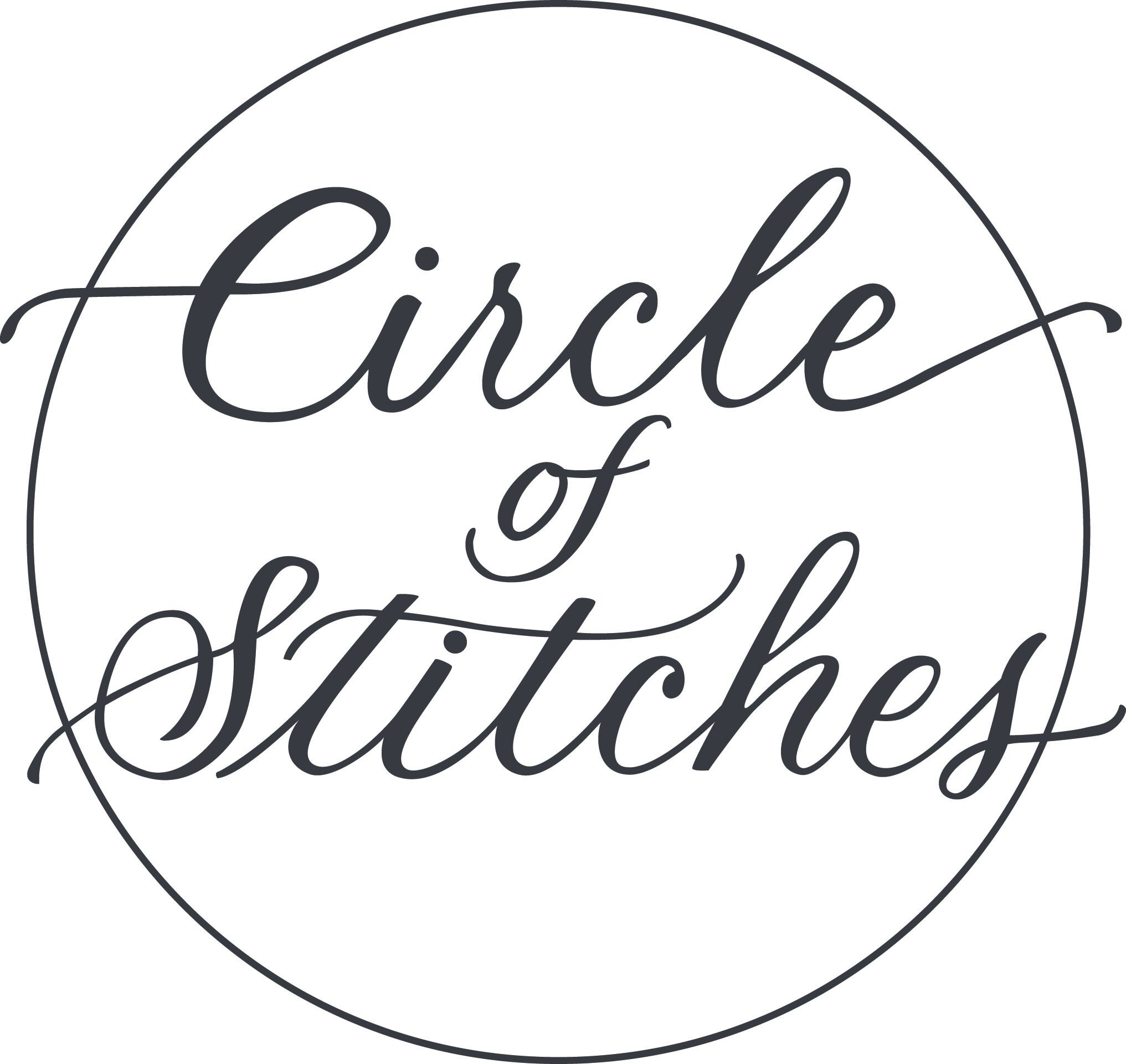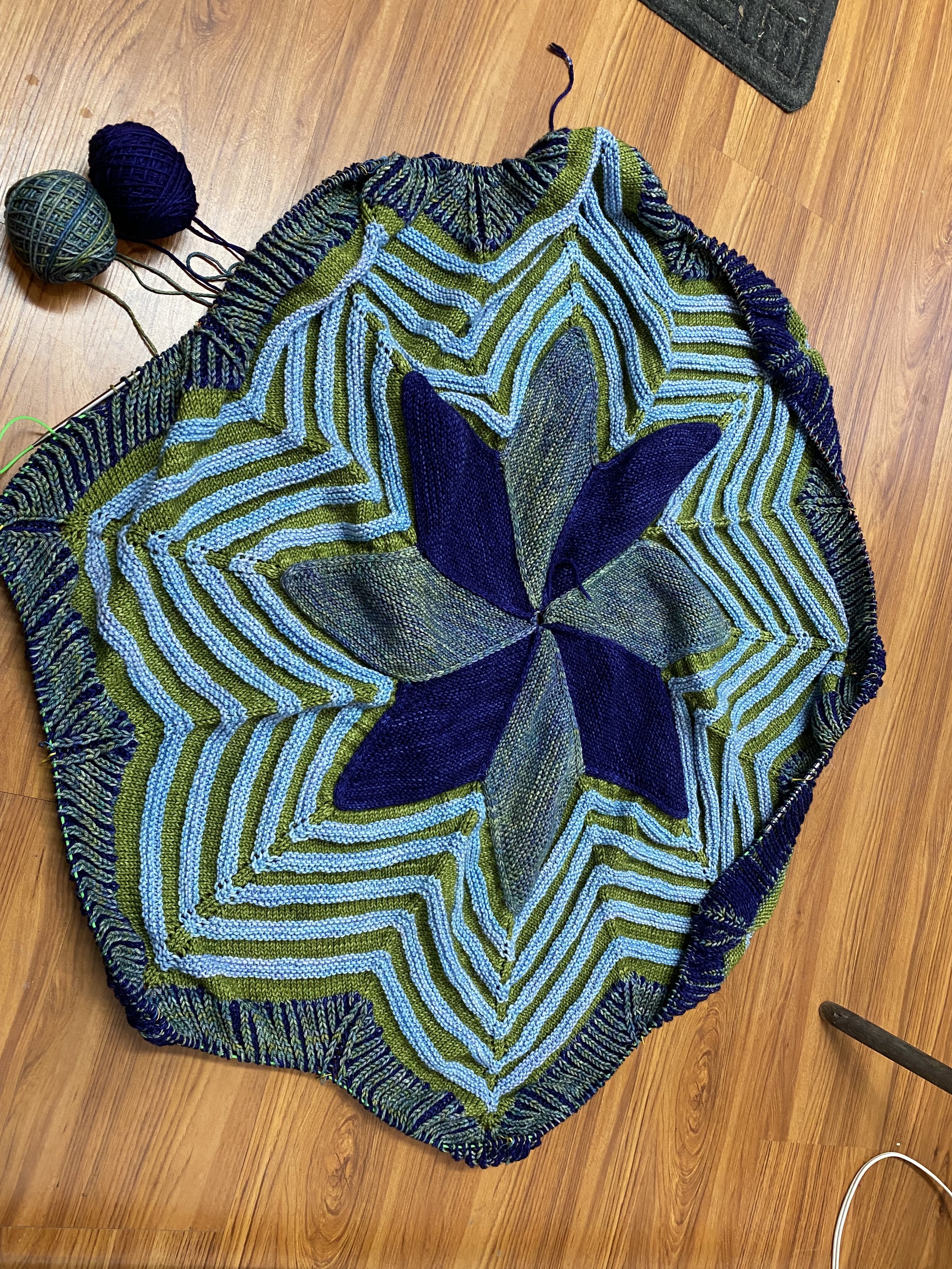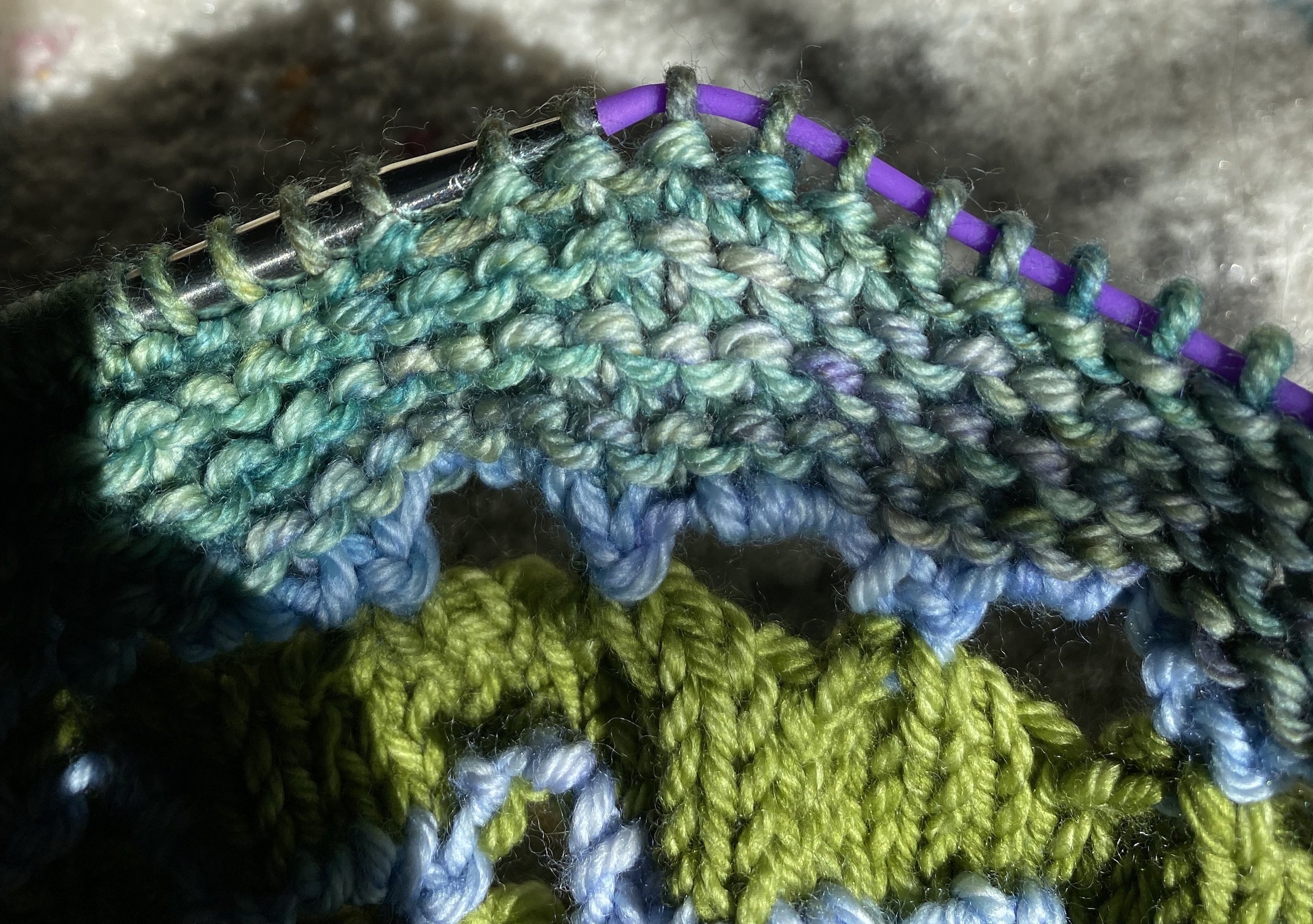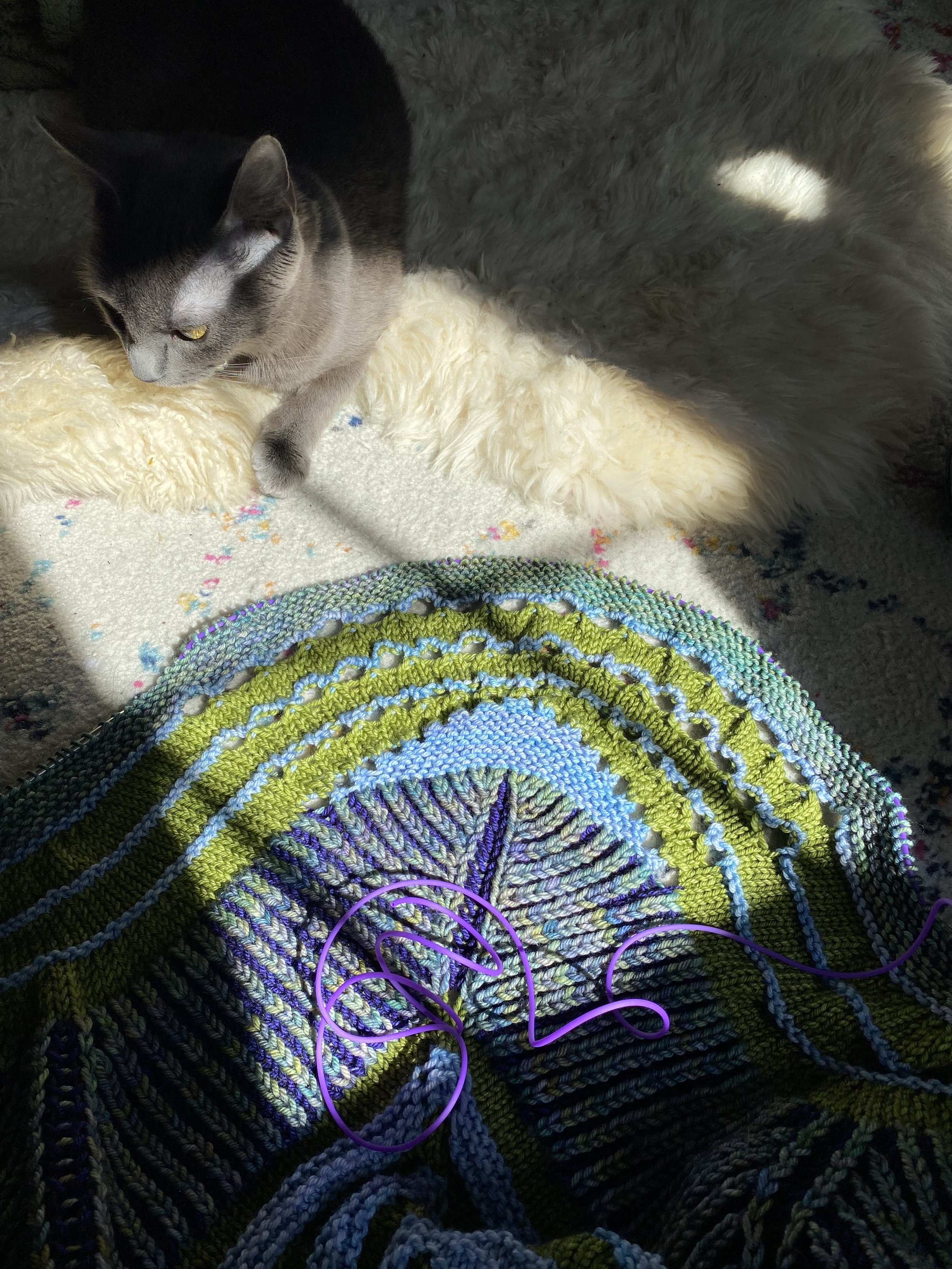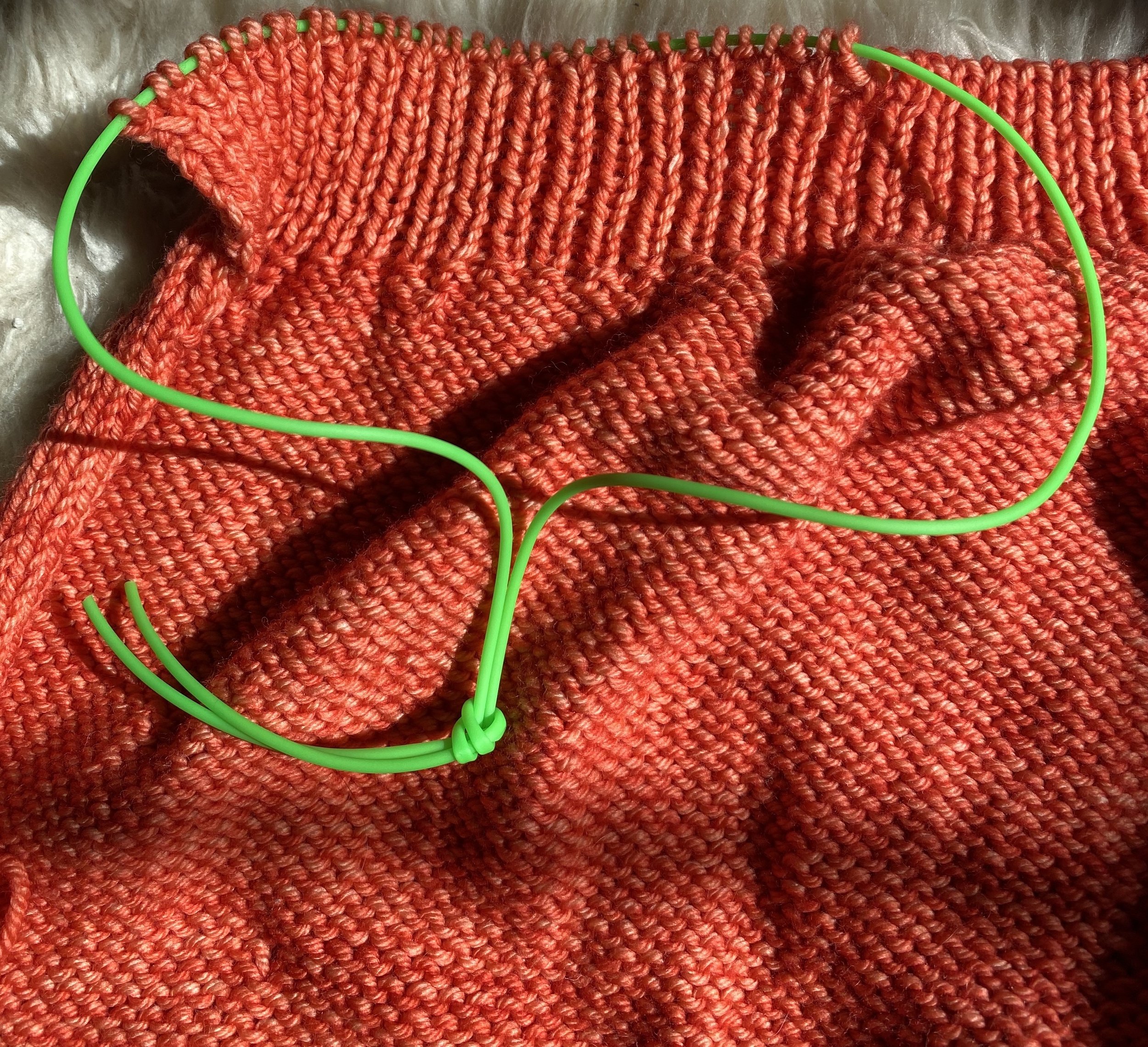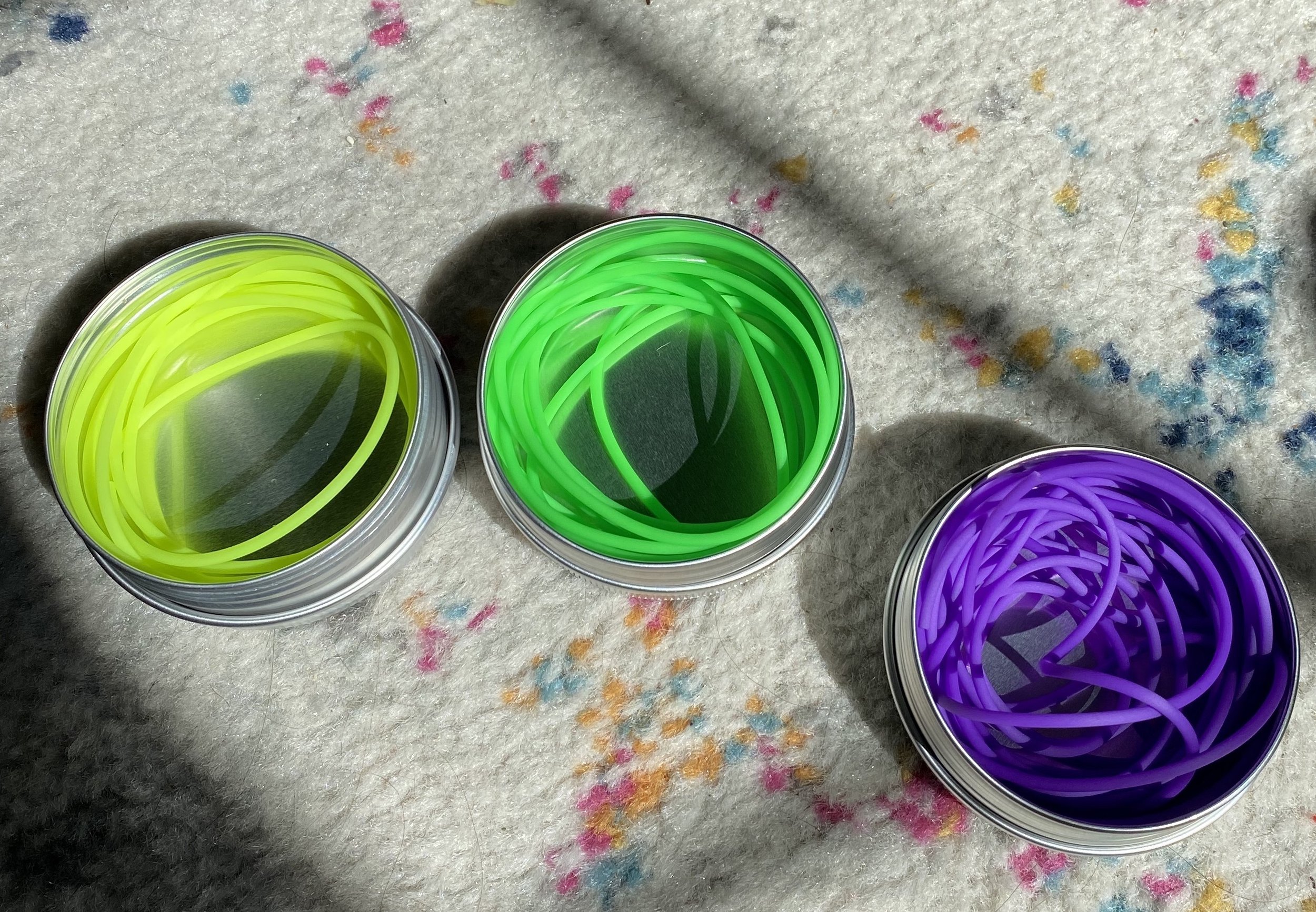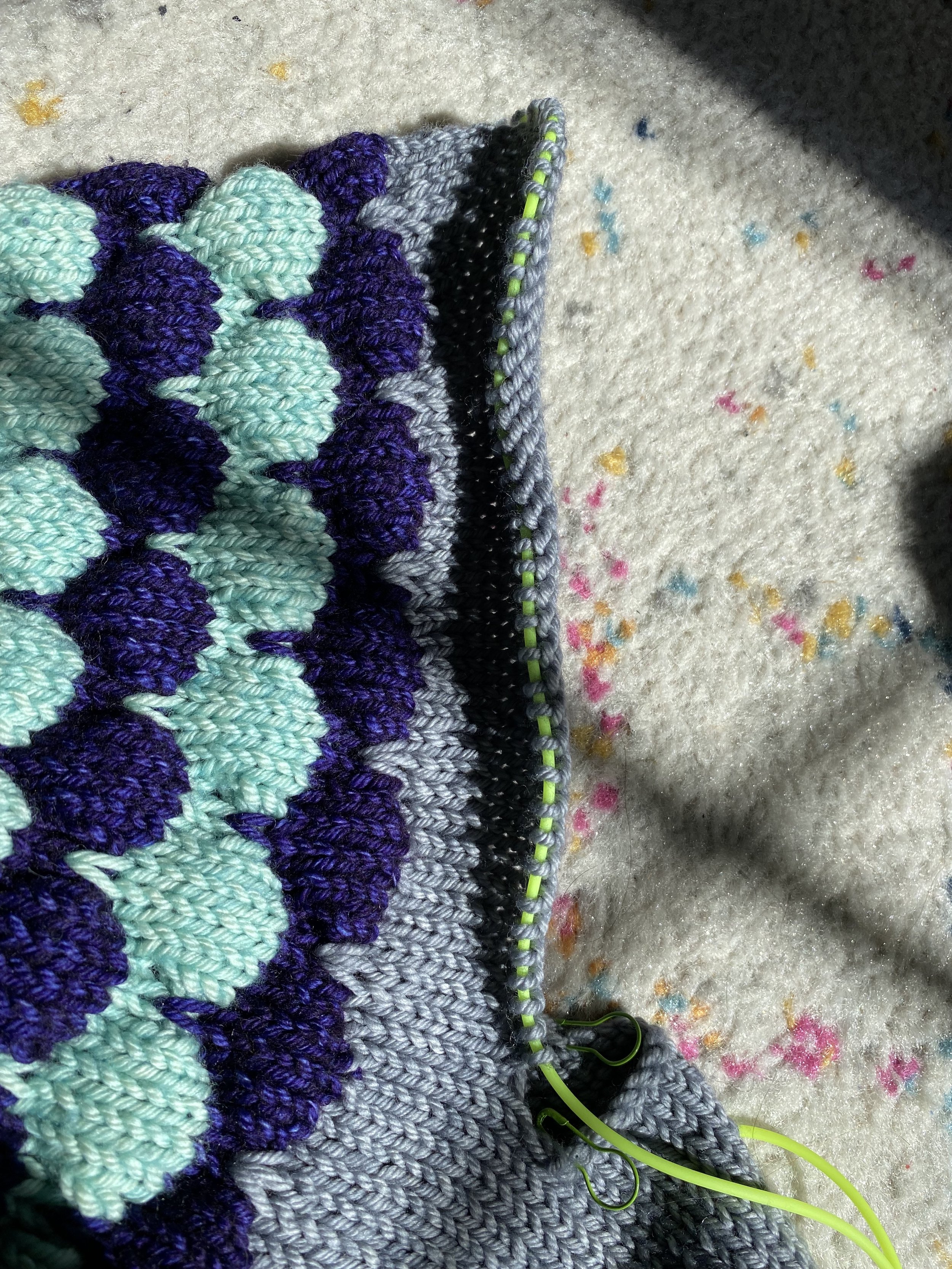I first heard about The Knitting Barber Cords through the shop newsletter. My immediate thoughts were:
What in the world are these?
What are they used for?
These are ridiculous, and silly!
Then I watched the episode of With Love, From Salem (on a side note, you should absolutely watch, the episodes are short, and Jacob and Ana are clearly having too much fun), where Ana did a demonstration of how to use the cords, and it honestly didn’t help my judgment of them.
Annie was kind enough to take the time to show me how they work and helped me try them with my Starflanket.
It wasn’t until I went to the shop in person mid-January and tried them out for myself! I truly couldn’t have been more wrong with my initial thoughts. Ana even quoted me in a newsletter saying “TKB cords are amazing. I first thought they were stupid and pointless, and now I think I use them daily.” I still stand by this! So far this year, I have been knitting a very large blanket, and a top down sweater. These cords have helped me knit the sweater by allowing me to see the true shape, rather than the shape of my knitting needles and cables. I think I’ve tried this sweater on more times this week because it’s so much easier than I did my entire last sweater. They have also helped me manage my large blanket project and see the shape and texture better than traditional circular needles.
Step One:
Attach the end of the cord to your knitting needle
Step Two:
Carefully, slide the stitches from the needle to the cable.
Step Three:
Admire your project, or try on your work!
I said that I use them daily and it’s true! They are so easy to use. The smaller cords are perfect for holding stitches for the sleeves of sweaters. I’m currently using the two smaller cords to hold the stitches for when I join the front and back panels of my Weekender sweater.
The smaller green cord holding the stitches for the shoulder of my Weekender.
I currently own three sets of the cords. They come in a beautiful assortment of colors. I currently have the Green, Violet, and Yellow cords. I definitely think they’re worth picking up a set. They’ll help mitigate some of that frustration trying on a sweater, or holding stitches or SOMETHING else.
The three sets I own. Yellow, Green, and Violet.
Another example of the cords holding the stitches for the sleeve of my Bubble Sweater.
The biggest downside, they are tempting targets for cats! Or perhaps a bonus?
I hope this helps convince you that these cords are worth it! Pick your favorite color (or three) here! Happy knitting!
